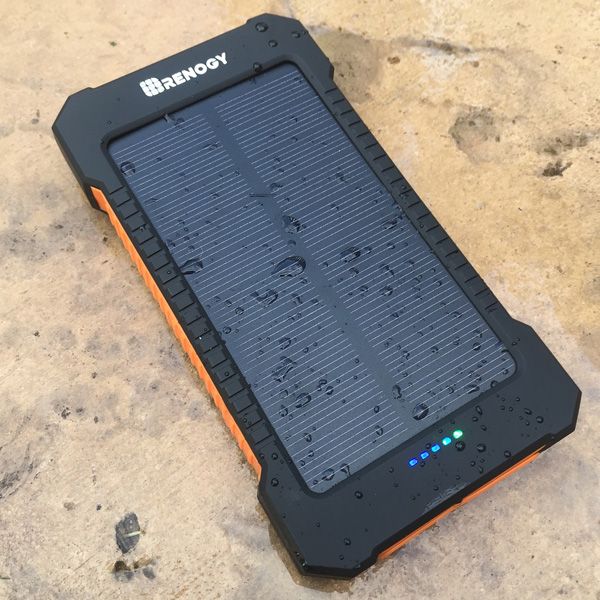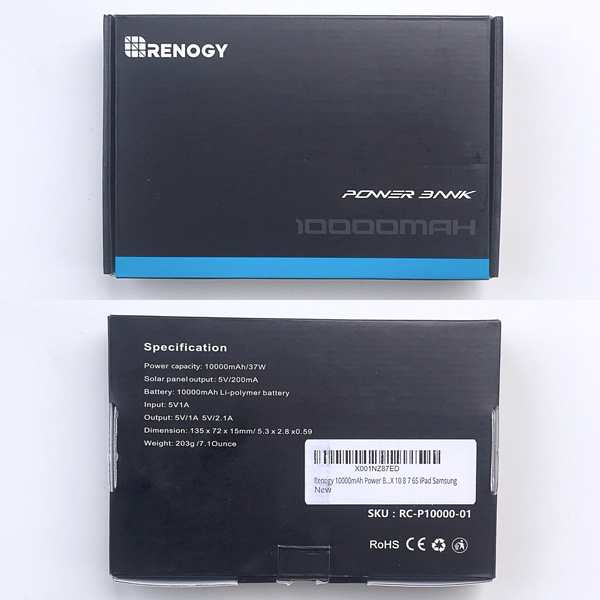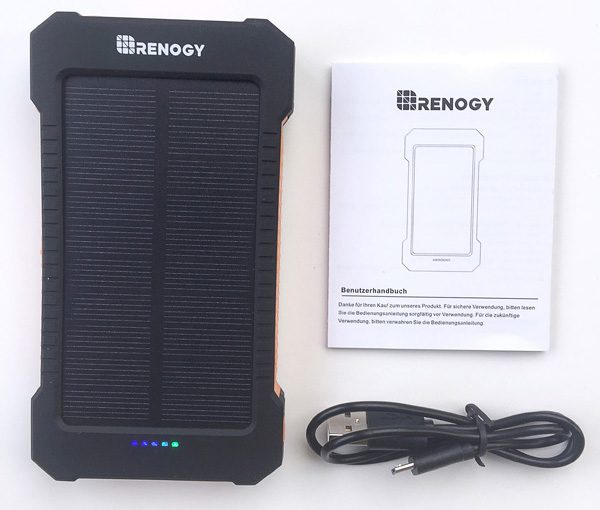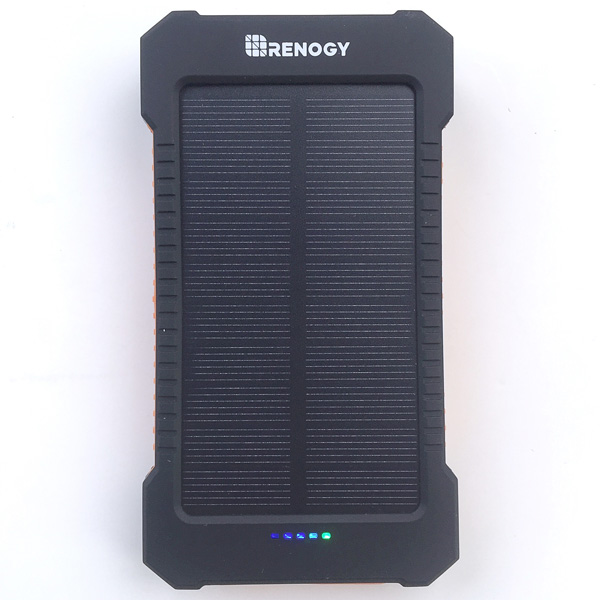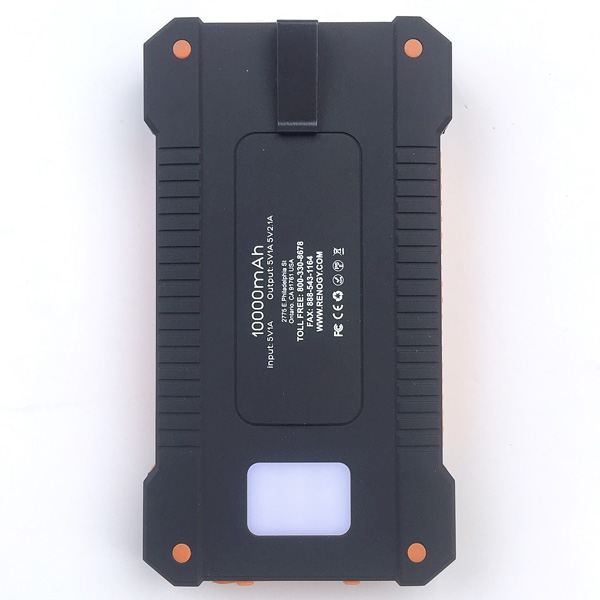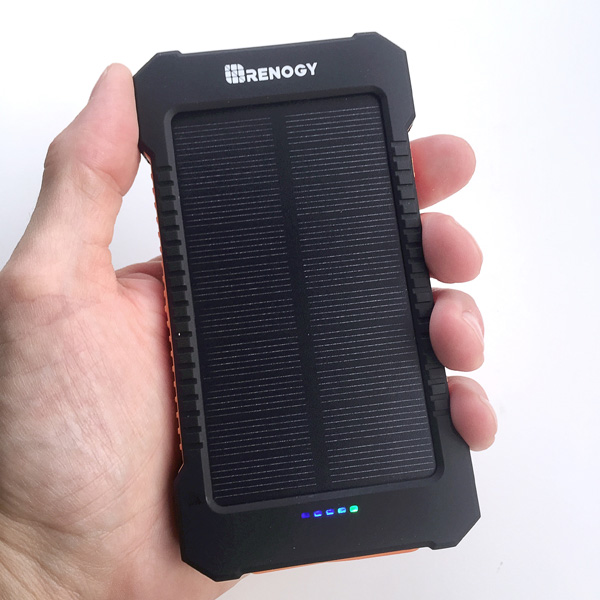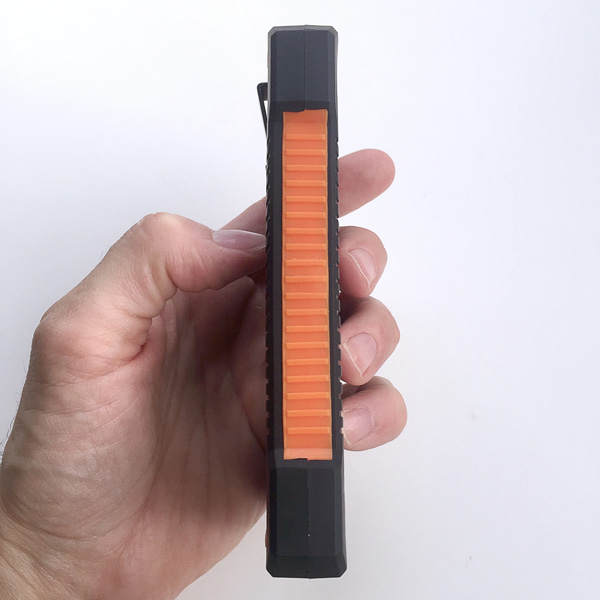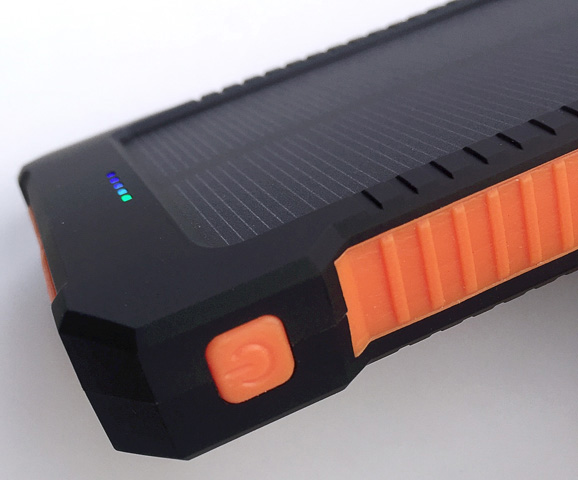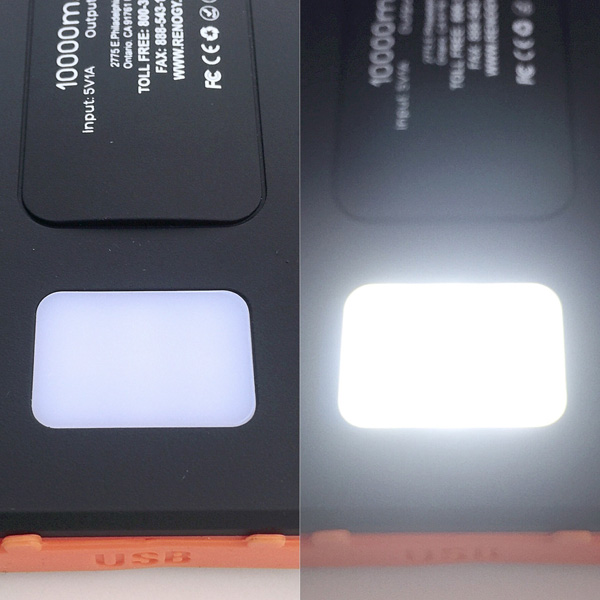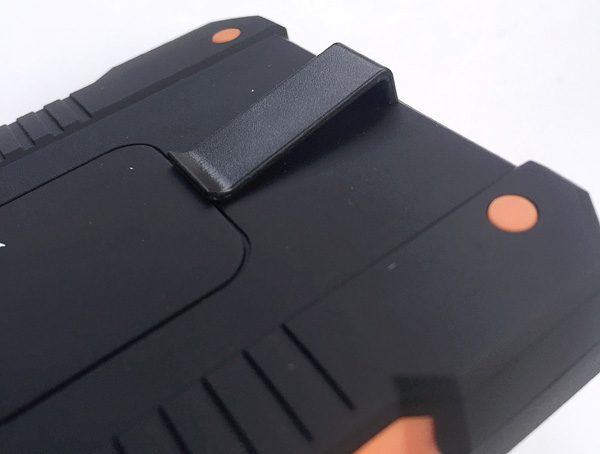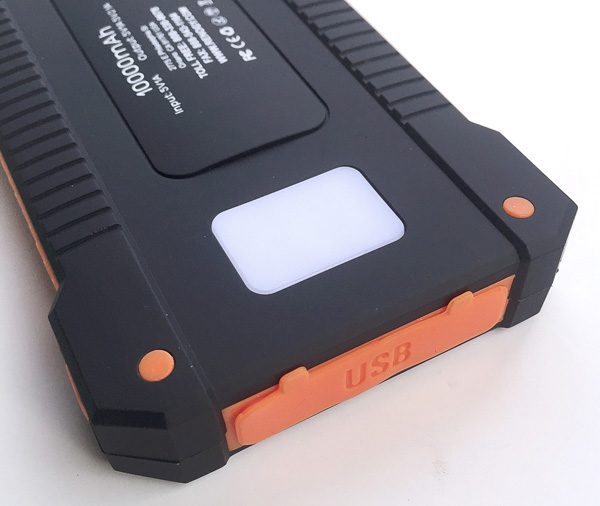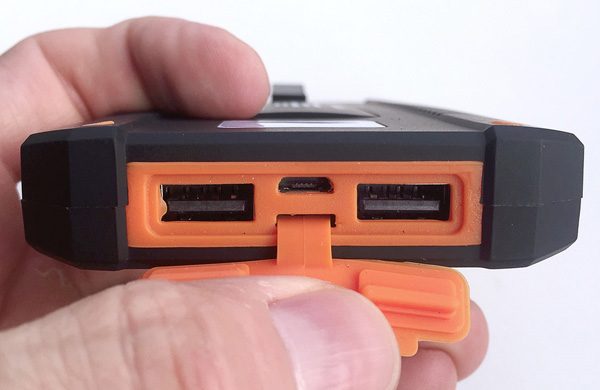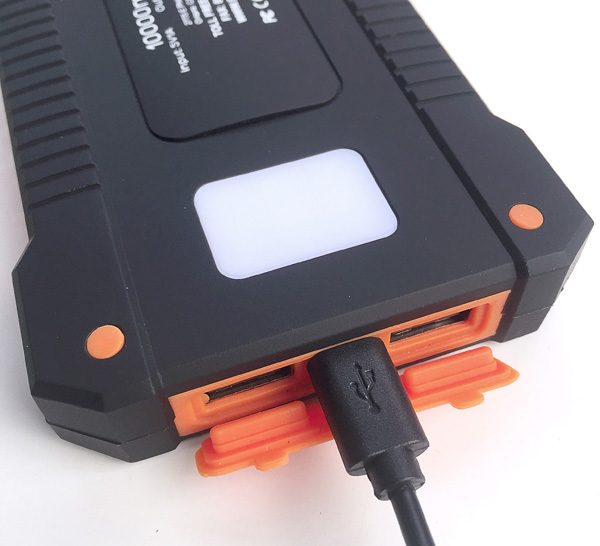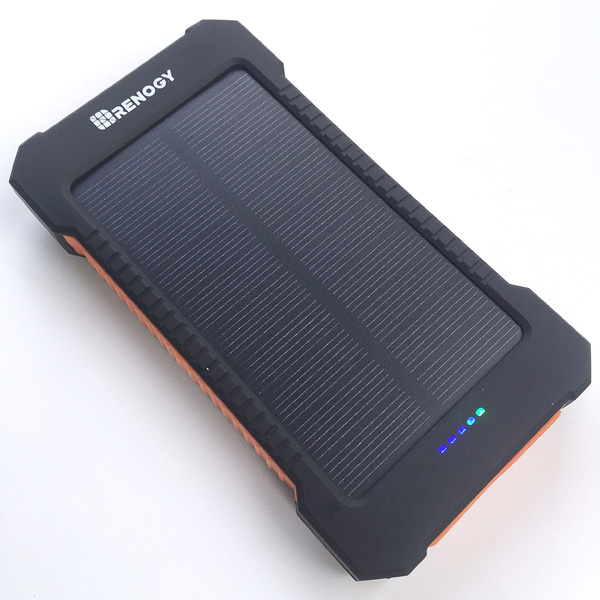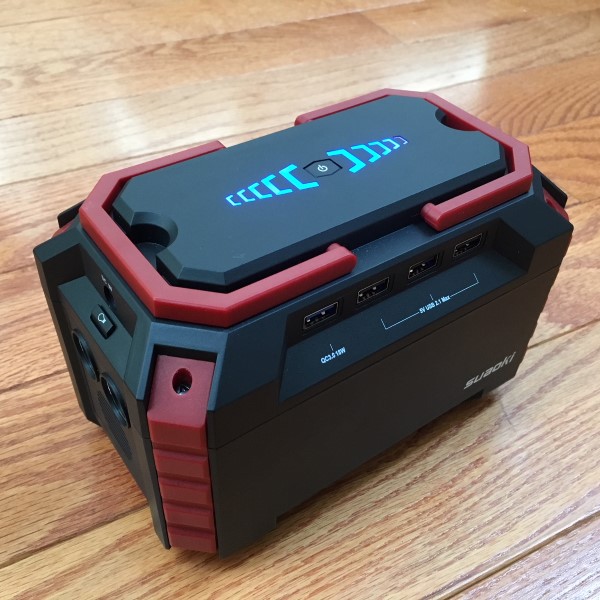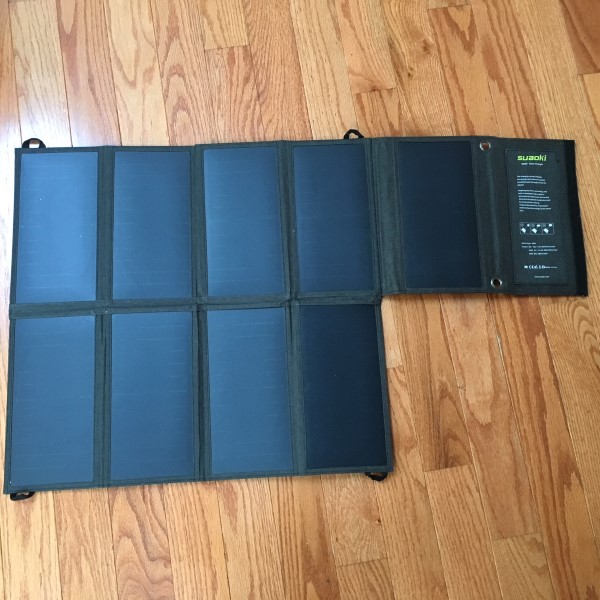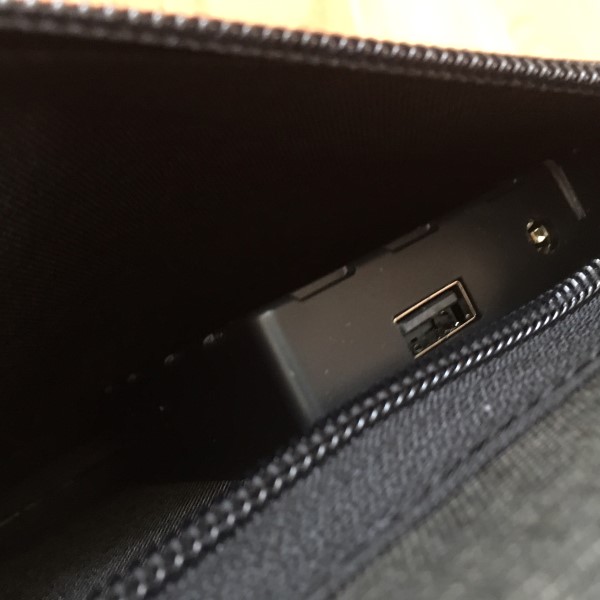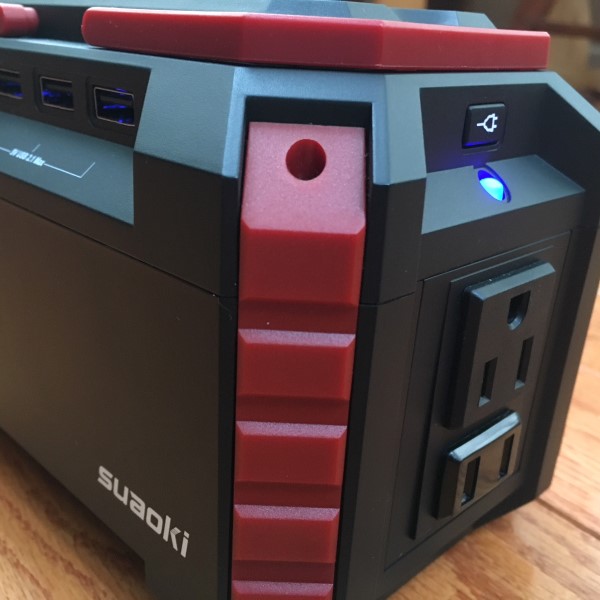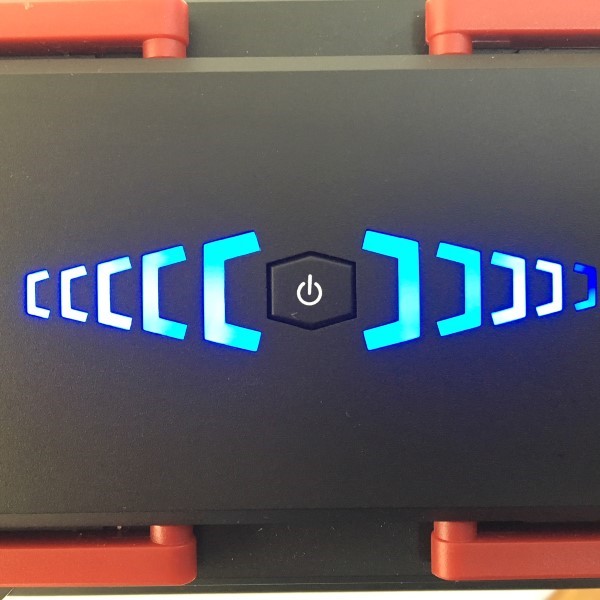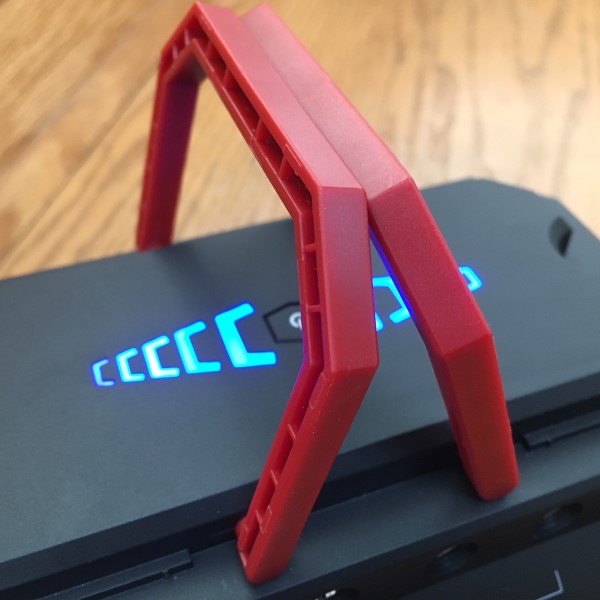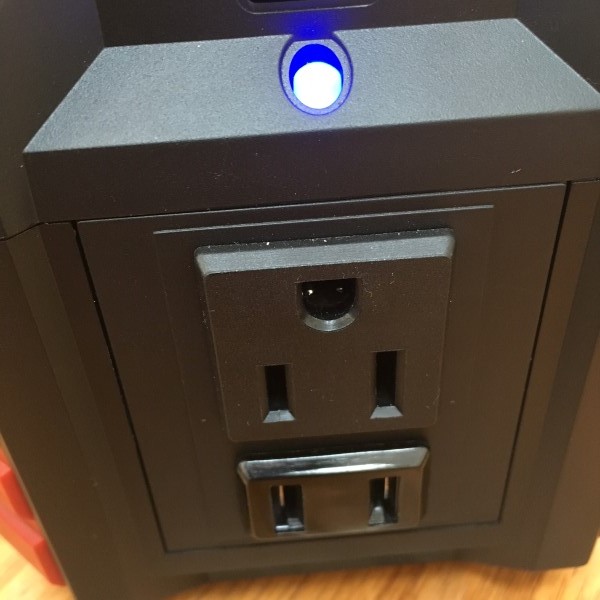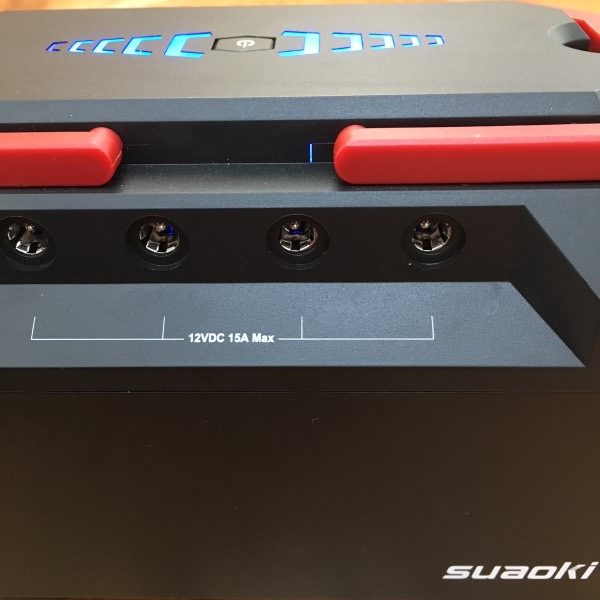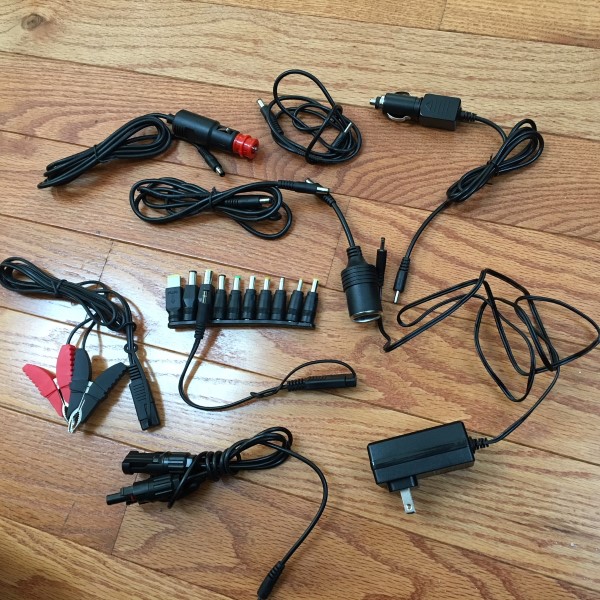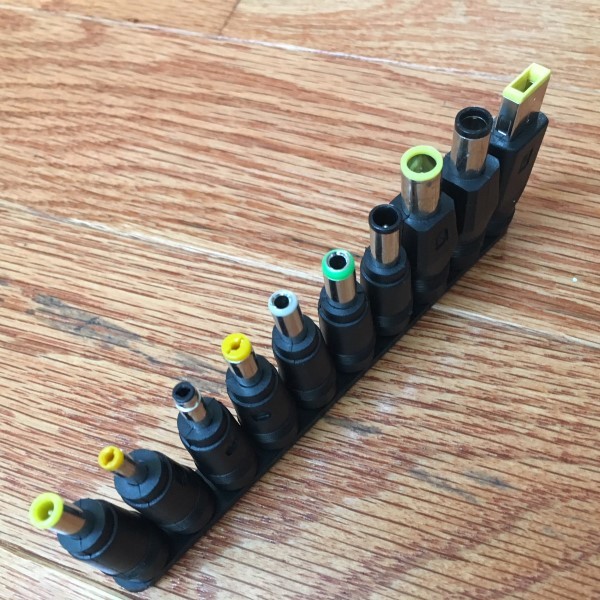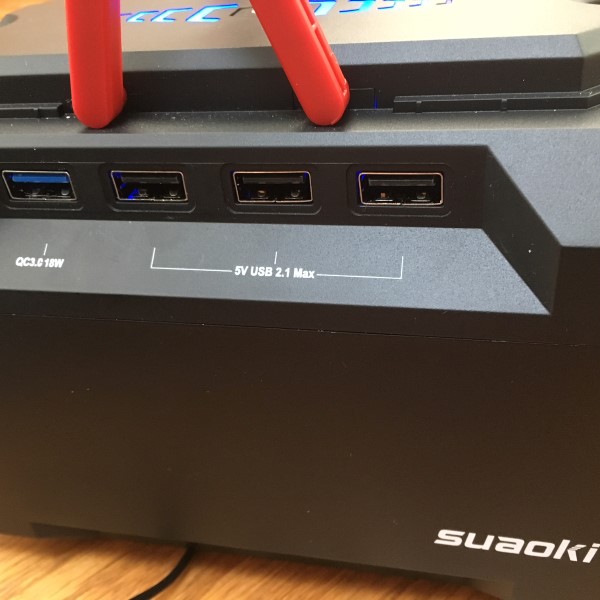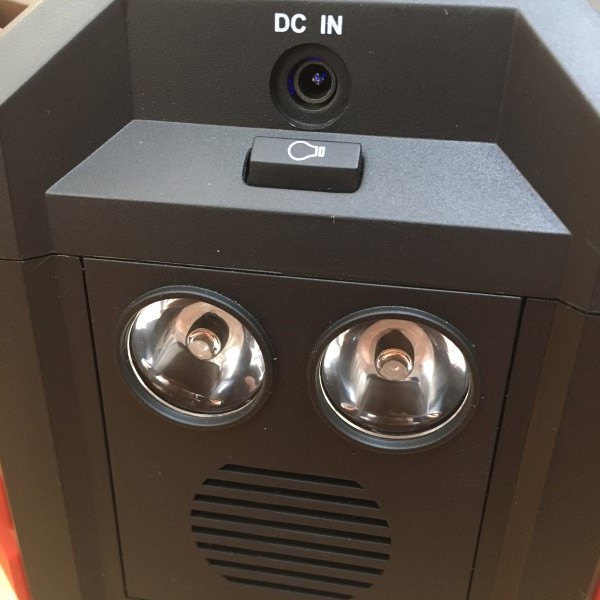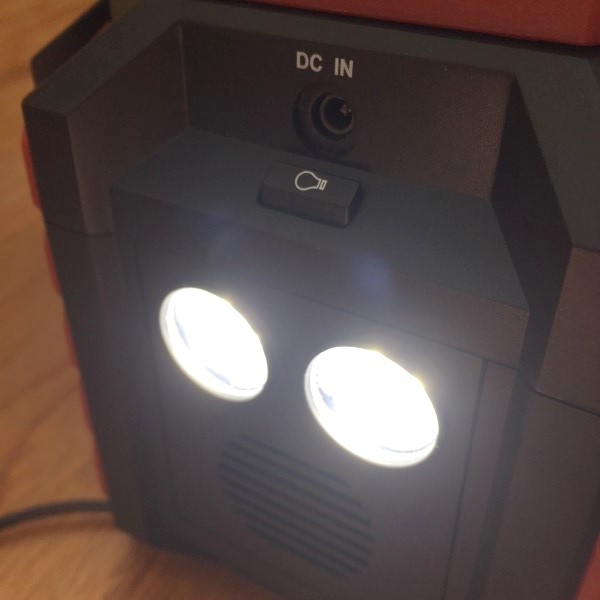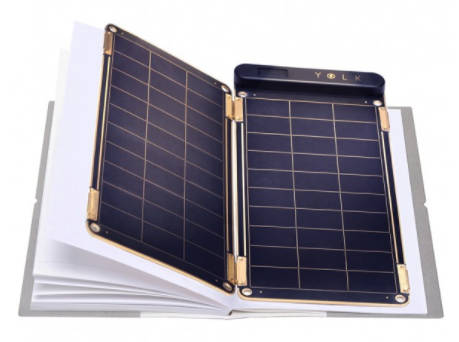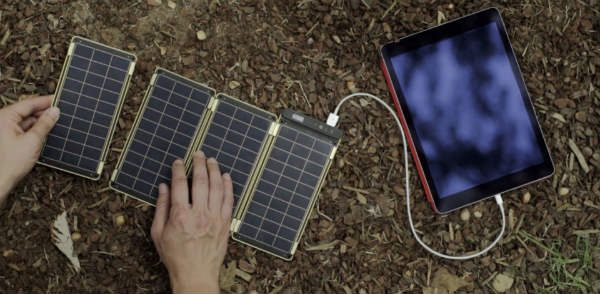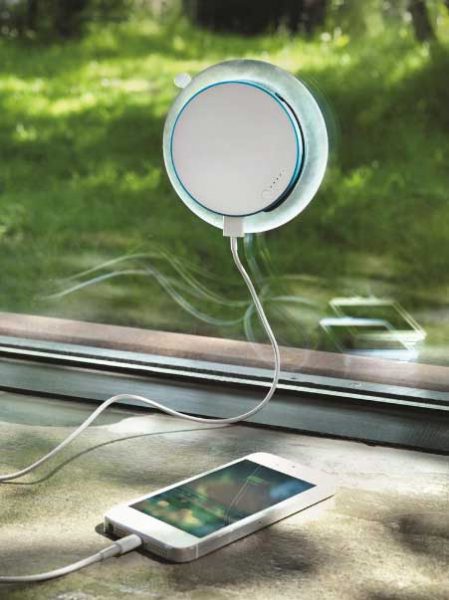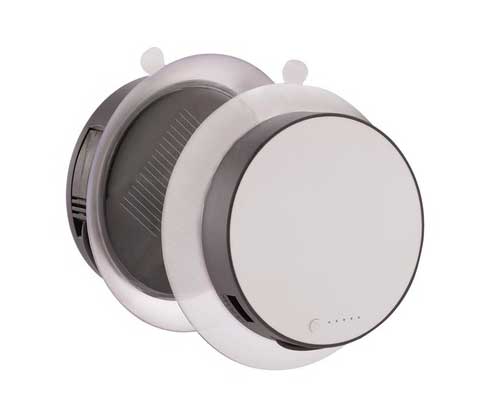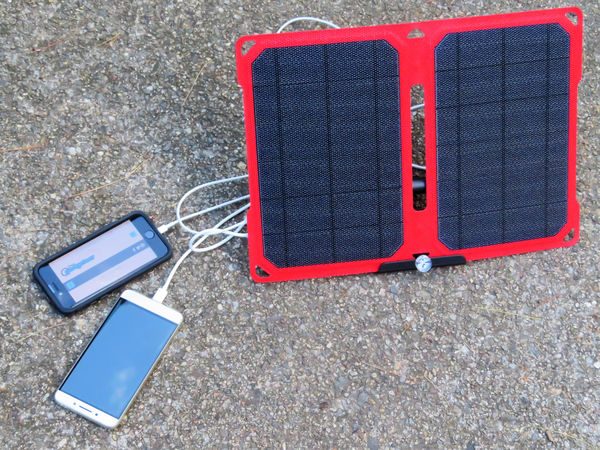
REVIEW – The Suaoki 14W portable solar charge panel can keep your rechargeable items fully powered even when you’re off the grid. The lightweight, thin, water-resistant design features two USB charging ports with optimized power output. Read on to see what I think!
What is it?
The Suaoki 14W portable solar charge panel is a gadget that you can use to charge rechargeable devices by converting solar energy into electricity. The solar panel generates power when it is exposed to direct sunlight. The circuitry in the panel ensures that the power delivered to each USB port is optimized to minimize the charging time required. The panel features an ETFE coating to protect the solar cells from the elements and rubber caps to protect the USP ports from water and debris. The panel comes with carabiners and nylon ties to support the panel from trees and equipment, as well as an easel with sun finder to point the panel directly at the sun.
What’s in the box?
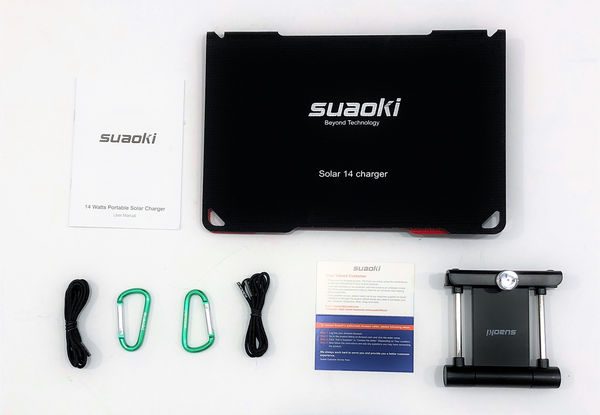
Suaoki 14W portable solar charge panel
User Manual
2 carabiners
2 1 meter long nylon ties
solar finder stand
Design and features
Specifications
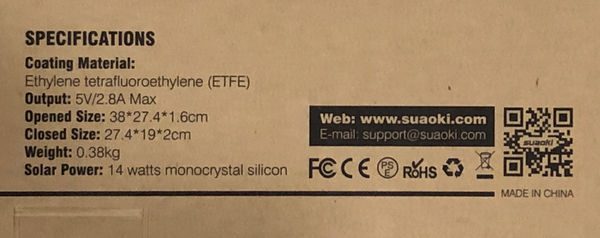
solar cells – 14 watt monocrystalline silicone
cell coating – ethylene tetrafluoroethylene (ETFE)
output – 5V/2.8A (14W) max
open size – 38 x 27.4 x 1.6 cm
folded size – 29.4 x 19 x 2 cm
weight – 0.38 kg
Unboxing
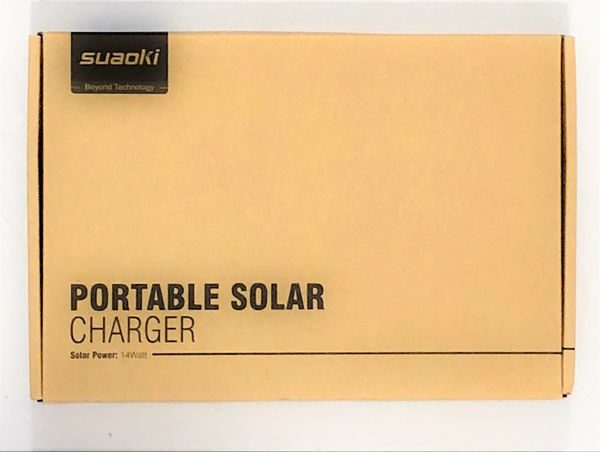
The Suaoki 14W portable solar charge panel comes in a no-frills cardboard box. The front, back and sides are printed with the product, specifications, suggested applications (tablet, mobile, 90’s iPod, a camera – with viewfinder, and a Sony PSP).
Design of the Suaoki 14W portable solar charge panel
The Suaoki 14W portable solar charge panel is a folding solar panel design that resembles a restaurant menu: a roughly 7.5″ by 11″ folded design opens to a roughly 11″ by 15″ surface when being used.
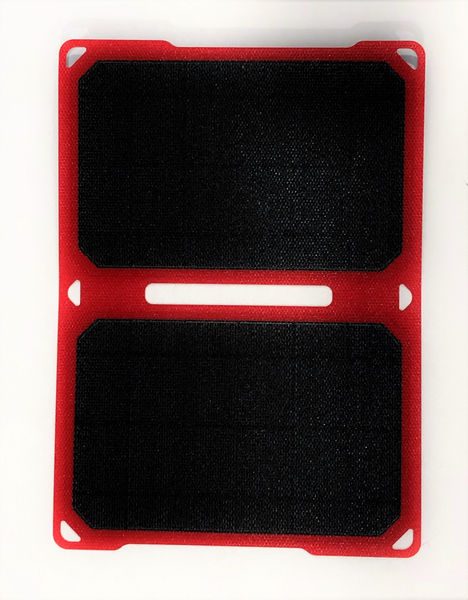 The outside back appears to be nylon coated. On one side of the panel’s rear is a small interface box with the USB ports on it and an LED indicator light. The area adjacent to the interface box is labeled with various compliance markings including the CE, RoHS FCC, WEEE, and recycling directives. Below the symbols, the device is marked that the country of origin is China.
The outside back appears to be nylon coated. On one side of the panel’s rear is a small interface box with the USB ports on it and an LED indicator light. The area adjacent to the interface box is labeled with various compliance markings including the CE, RoHS FCC, WEEE, and recycling directives. Below the symbols, the device is marked that the country of origin is China.
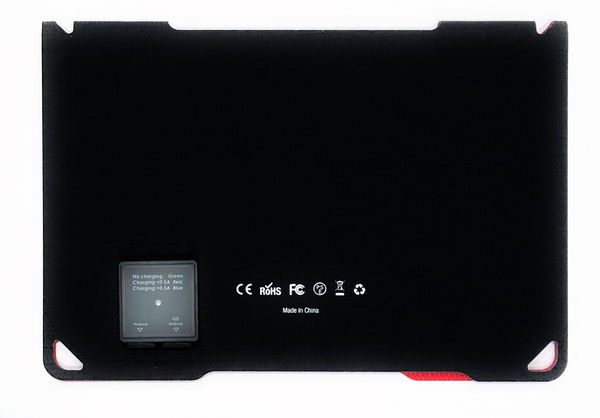
On the front of the unit, the Suaoki brand label is centered above the product name: “Solar 14 charger”
When the unit is opened, the inside appears to be coated with fiberglass; the surface has the texture of a cast woven mat.
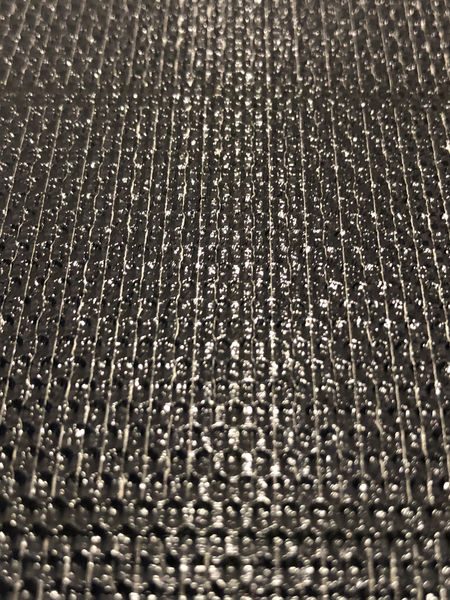
However, the inside is coated with ETFE. This material has superior tolerance, compared with PET, to high temperatures that solar cells are exposed to and will outlast PET when exposed to salts, acids and bases. The cells are encapsulated within the coating. The corners of the cells have been mitered to provide more resistance to cracking. Even though the outer rim and hinge is flexible fabric, the cells are made of silicon crystal. This gadget is designed for outdoor use, but it is still fragile and must be treated with care. It would be beneficial to include a warning on the unit, such as: “caution, handle with care!”
The manufacturer states that the plastic coating and rubber boots for the ports give this gadget an IPx4 rating. Per the International Protection Marking this corresponds to protection against splashing and is tested to verify that water splashing against the enclosure from any direction shall have no harmful effect, utilizing either: a) an oscillating fixture for 10 minutes or b) A spray nozzle with no shield for 5 minutes.
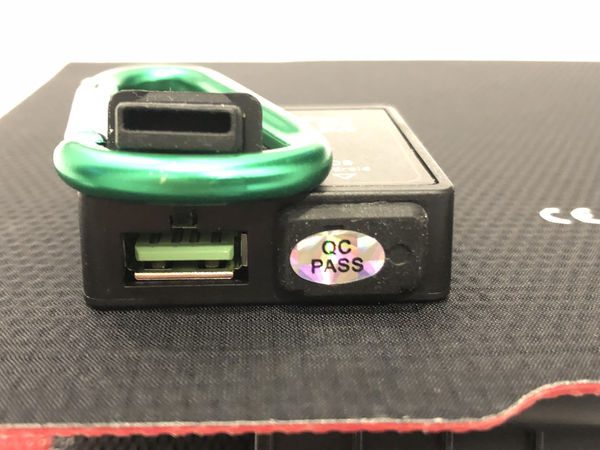
There are six eyeholes around the perimeter of the unit: one in each corner and two along the center. These can be used along with the ropes and carabiners to mount the gadget just about anywhere the sun will hit it. The ropes are really shoelaces but will do the trick.
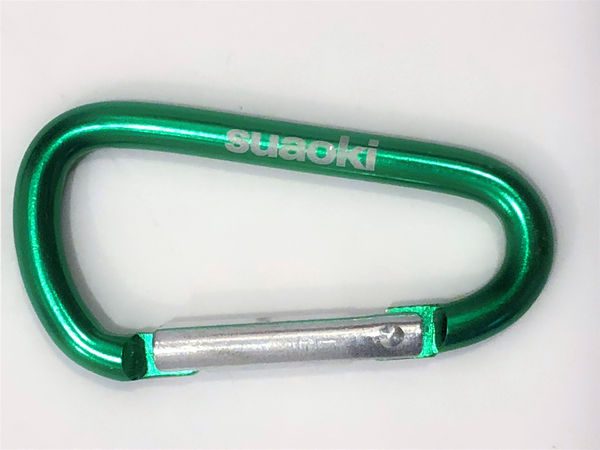
The supplied stand has a locking hinge that can be used to set the angle of the unit. The sun finder is located at the lower front of the easel. A clear plastic window with a small painted dot in its center sits about a quarter inch above a white target with black crosshairs. When the shadow of the painted dot is in the center of the crosshairs the solar panels are perpendicular to the sun. This is an important consideration since the power efficiency drops as the angle the panel makes with the sun changes from perpendicular to parallel. the stand may be stored against the unhinged side of the panel when not in use. I did find that the label on the push button which releases the stand lock was easily removed.

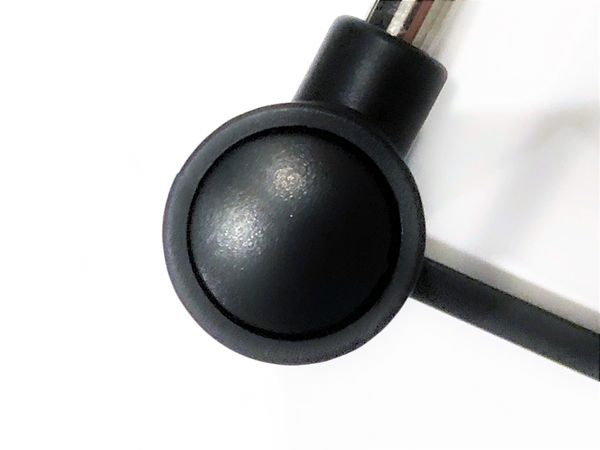
The manufacturer states that the conversion rate for the panel is up to 20%, which is below the expected maximum conversion of 26.7%, but around the maximum conversion for compting technologies. This means that based on a cross-section of all technologies currently available, this panel is one of the most efficient.
Operation
The Suaoki 14W portable solar charge panel has two USB ports. One is optimized for iPhone but may also charge Android devices and the other port is optimized for Android only. The directions give no indication of which port is best for charging a battery pack. The charging circuit starts as soon as the panels are exposed to sufficient light to power the unit. The circuit will automatically regulate the current supplied based on the available sunlight. A LED mounted on the interface box will illuminate green if there is insufficient current available for charging, red if there is less than 0.5 A available and blue if there is more than 0.5 A available.
Performance
I used the Suaoki 14W portable solar charge panel with an iPhone, Android (LeEco Le Pro3), J7-t safety tester and a Drok USB intelligent electronic load.
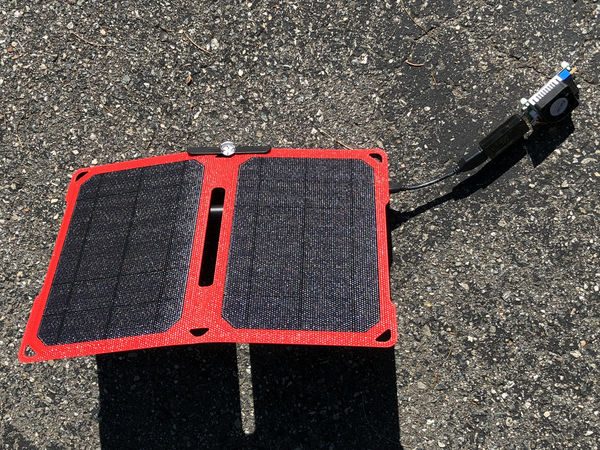
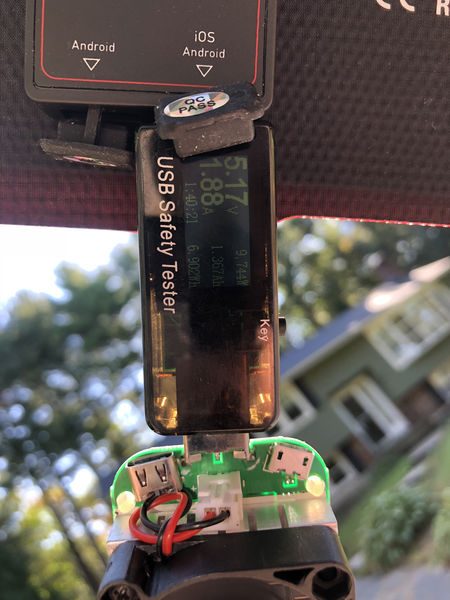
I tried charging each device with the safety tester in line and I could not achieve a continuous power greater than 9.8 W indicated on either the Drok or the J7-t. When charging two devices the most I could get was 8.3 W combined.
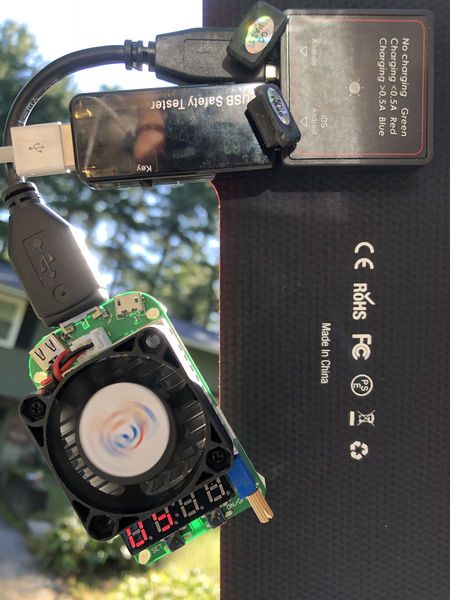 These measurements were made on a bright, sunny, cloudless, haze-free day so conditions could not be more optimal. I used the stand with the solar panel so that the orientation was perfectly aligned.
These measurements were made on a bright, sunny, cloudless, haze-free day so conditions could not be more optimal. I used the stand with the solar panel so that the orientation was perfectly aligned.

It seems that getting 14 W in the field isn’t something I was able to do. Maybe I’ll try in the summer on the equator, but for now its more of a “Solar 10” than a “Solar 14”,
What I like
- Easy to use
- Many mounting options
- Efficient
- Built-in current indicator
What needs to be improved
- power output
- fragility warning
Final thoughts
The Suaoki 14W portable solar charge panel is a great option to keep your gear going in the outdoors. Using this along with a well-performing USB power pack will permit you to always make sure your power reserves are topped off.
Price: $59.99
Where to buy: Suaoki and Amazon
Source: The sample for this review was provided by Suaoki.
Filed in categories: Reviews
Tagged: solar charger
Suaoki 14W portable solar charge panel review originally appeared on The Gadgeteer on October 4, 2018 at 1:21 pm.
Note: If you are subscribed to this feed through FeedBurner, please switch to our native feed URL http://the-gadgeteer.com/feed/ in order to ensure continuous delivery.

